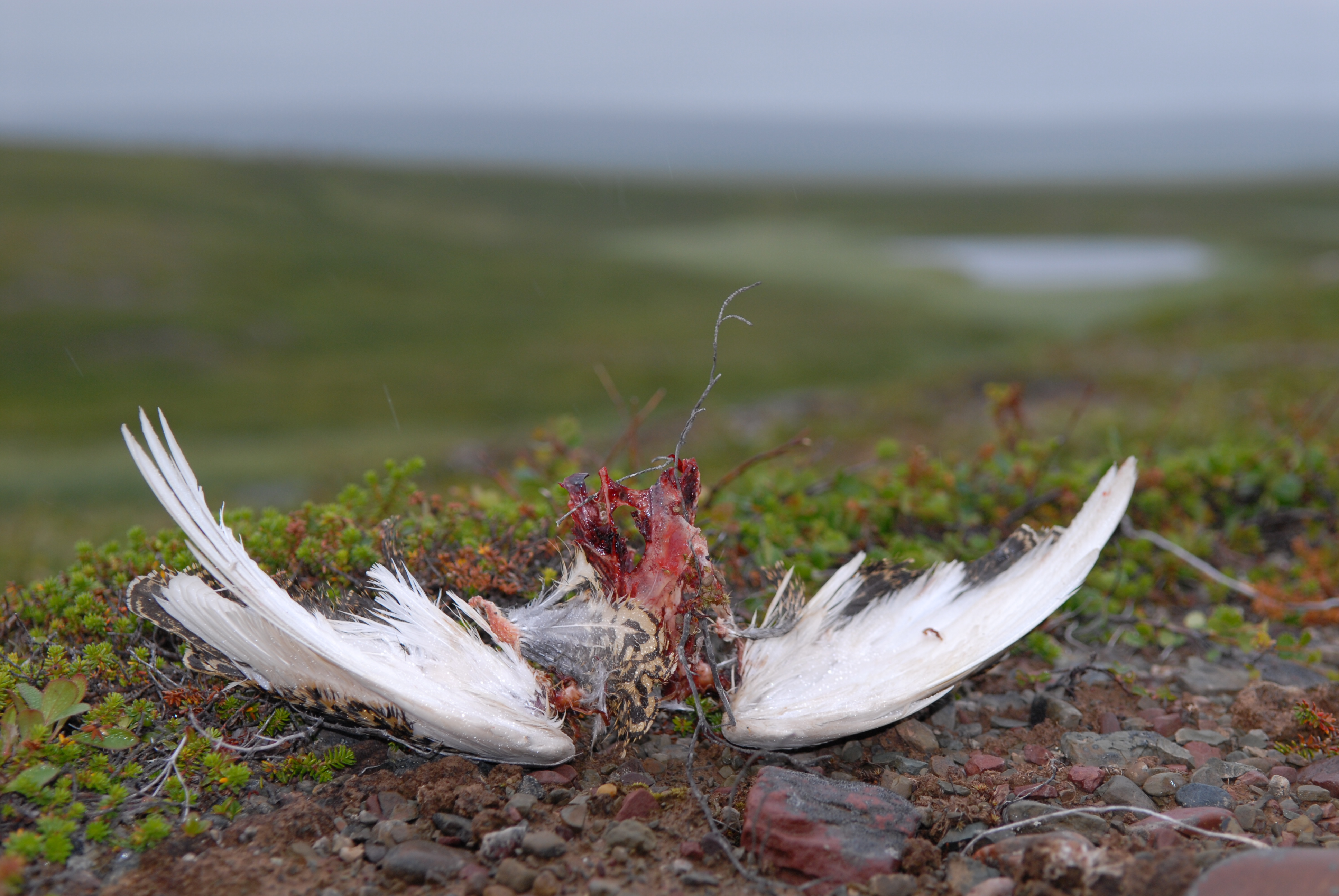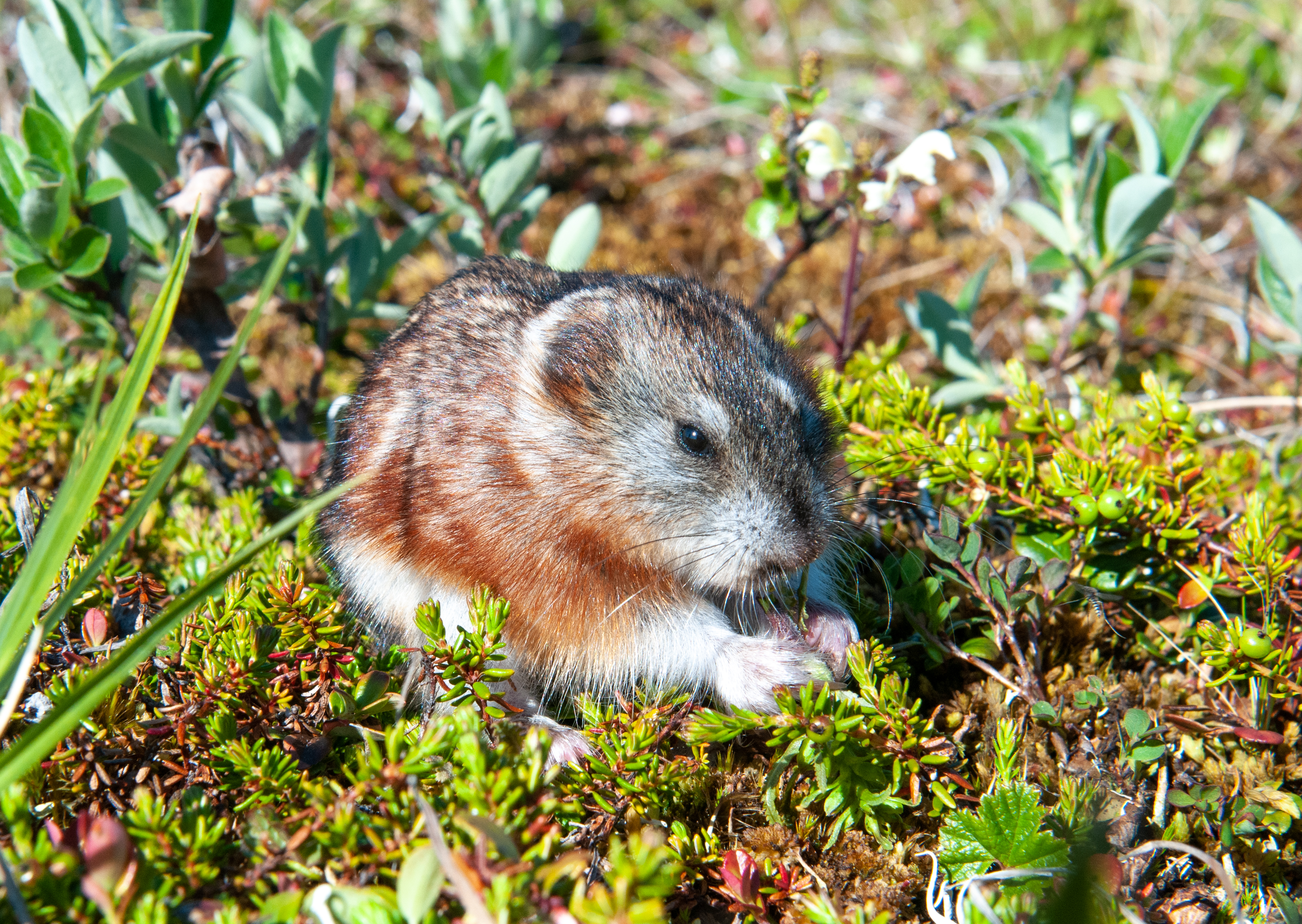The working groups of the Arctic Council conduct periodic assessments of state of the Arctic environment. In 2013, COAT researcher led a comprehensive assessment of Arctic tundra ecosystem (Ims et al. 2013). Now new assessments have been made for some circumpolarly distributed and ecologically important species groups in these ecosystems. Eva Fuglei and John-André Henden led the assessment of ptarmigans, whereas Dorothee Ehrich led the assessment of lemmings. Both assessments, which are published in AMBIO, have involved large teams of co-authors and analyses of time series from all arctic nations.
The ptarmigan assessment of Fuglei, Henden et al. demonstrates that populations of rock ptarmigan and willow ptarmigan have very different dynamics across the Arctic. Population cycles are commonly occurring, however, the period of these cycles varies much depending on which other herbivore species that are present (and dominates the food web) in the ecosystem. For instance, ptarmigan cycles with a periodicity of ca. 10 years are common in N-America where the food web dynamics is ruled by 10-yr snowshoe hare cycles. In northern Scandinavia, willow ptarmigan populations have a tendency for 3-5-year cycles that is driven by the small rodent cycles in this region. The rock ptarmigan, which may be found in simpler food webs than the willow ptarmigan, has often population cycles where gyrfalcons are also resident. The gyrfalcon is a specialist ptarmigan predator that may drive ptarmigan cycles. In Svalbard, where there are no specialist predators nor other herbivores with population cycles, the rock ptarmigan has a quite stable, non-cyclic dynamics. Several ptarmigan populations have had a decreasing trend over the last decades, but it is difficult to attribute this to specific environmental drivers. This is because such trends may be a part of the natural dynamics of ptarmigans, because they have several relations to other components of the food web that can create complex population dynamics. Separating impacts of environmental forcing (i.e. climate change) from dynamics caused by natural interaction within the food web requires ecosystem-based monitoring and modelling as aimed by the ptarmigan module of COAT.

Ptarmigan populations may have cycles that are driven by Gyrfalcon predation. Here the typical remains of a Gyrfalcon meal. Photo: Geir Vie
The lemming assessment of Ehrich et al. shows that the Arctic is also highly heterogeneous with respect to what sort of local lemming population dynamics that is observed. Lemmings have become famous for their high amplitude 3-5-yr population cycles, especially based on the many Fennoscandian studies of the Norwegian lemming (Lemmus lemmus). However, many of the population time series from other species and places in the Arctic show a more irregular dynamics. A reason for this is that lemmings across the Arctic are found in very different ecosystems contexts; e.g. very different climate regimes and/or food webs. Variation may also be due to that lemmings are monitored with different methods and purposes across the Arctic. For this reason, harmonization of methods to achieve a better baseline for pan-arctic assessments is needed. Methodological inconsistencies, and often short time series from population with seemingly much erratic natural dynamics, presently obstruct firm conclusions of to what extent arctic lemmings overall is negatively impacted by a milder winter climate – in a manner that previous studies on Greenland and alpine southern Norway have demonstrated. However, the new pan-arctic assessment indicates that such impacts so far only regard a few of the monitored populations, and mostly so where lemmings co-occur with voles in low-arctic ecosystems. On Varanger peninsula, COAT monitors lemmings at the southern edge of the Arctic where two vole species (tundra vole and grey-sided vole) are common. Hence, COAT small rodent module can provide new insights to ecological interactions that may be responsible for a pan-arctic phenomenon.

Several lemming species is present in the Arctic and not all populations have typical cycles. The photo shows a collared lemming from a low-arctic locality in Siberia. Photo: Valeri Belov
Both the lemming and ptarmigan assessment points out that monitoring of these ecologically important species has presently a very poor geographic coverage in the Arctic. The development of more efficient monitoring methods, as done within COAT Tools, can help to improve this situation.